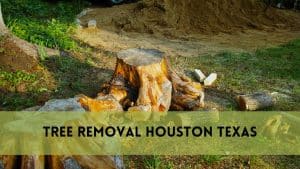If you recently planted a tree, you may be wondering if it’s OK to pull the stakes out. It’s an important part of tree maintenance that’s sometimes forgotten, yet timing is everything when it comes to a tree’s growth.
Why and How to Use Removed Tree Stakes
Stakes for trees are essential for providing support to young seedlings during their early growth stage. A tree is vulnerable to several outside elements when it is first planted, including wind, animals, and even unintentional bumps. By staking, you may guarantee that the tree can develop a robust root system and contribute to stability.
Stakes should not be left in place for too long, though, since this might impede the tree’s natural growth. The tree must develop the ability to resist outside influences on its own as it ages.
Tree Maturity Early Warning Signs to Remove Tree Stakes
The exact kind of tree and the surrounding circumstances have a major role in determining whether to remove tree stakes. Nonetheless, certain universal indicators may be used to determine whether a tree is mature enough to support itself.
The tree’s growth pattern is one of the first things to look at. You’ll see a shift in the tree’s general structure and stance as it grows. An established tree will become more erect and self-sufficient, indicating that it could be time to take off the training wheels.
Getting Used to the Environment
Think about the elements in the environment that affect the tree’s growth. Trees exposed to regular storms or grown in windy locations would require longer support. Conversely, trees in more protected areas could outgrow the requirement for stakes earlier.
It’s critical to assess the tree’s environment and base your decision on the particular circumstances it encounters. Resilience is a skill that nature imparts, and a tree’s ability to adjust to its surroundings is essential to its long-term health.
Examining the Root System to Remove Tree Stakes
Stability is mostly derived from the roots of a tree. Examine below the surface before determining whether to remove tree stakes. To examine the root system, carefully dig a small hole in the ground at the tree’s base.
Positive signs include a well-established root system that anchors the tree firmly and spreads outward. When the tree resists being moved, you may be certain that the stakes have fulfilled their role and the tree is ready to stand on its own.
A Practical Method to Remove Tree Stakes
Assessing trunk movement is a practical method to help decide when to remove stakes. Give the tree a little prod from several angles to give it a mild prod.A fully grown tree should move very little, demonstrating its resilience to outside influences.
- Growth rates and tree varieties are two factors that affect how long a stake lasts.
- The rates of growth and the timescales for structural development differ between tree species. For example, trees that develop swiftly could outgrow the requirement for stakes sooner than their slower-growing counterparts. Determining the ideal staking period requires an understanding of the unique qualities of the tree you have planted.
- Gaining helpful information might come from investigating the usual development patterns of your tree species or consulting tree care specialists. It’s important to be patient since giving the tree the time it needs to establish itself will benefit its resilience and long-term health.
Common Errors to Avoid While Removal of Tree Stakes
In the early stages, support is crucial, but there are hazards associated with extended staking. One typical error that prevents trees from growing naturally is to leave stakes in place for an extended period of time. Weak trunk growth and an excessive dependence on outside assistance may result from this.
Rules for Safe Stake Removal
After evaluating the maturity indicators of the tree and comprehending the possible hazards of extended staking, it’s time to investigate the methodical procedure for safely removing stakes. To guarantee a seamless transition for your tree, abide by following rules:
Step 1: Assess Tree Stability
Determine whether the tree is currently stable before pulling any stakes. It might not be ready to have the stakes removed if the tree continues to sway significantly or exhibits other indicators of instability. Take heed of your views and act with caution.
Step 2: Gradually Loosen Ties
If ties are holding your tree to the stakes, begin by progressively releasing them. By taking this step, the tree can become more flexible without the support being totally removed. Over the course of a few days, observe how the tree reacts to this change.
Step 3: Take Out the Stakes One by One
Consider using a progressive approach rather than eliminating all stakes at once. Take out a stake at a time, then watch the tree’s response. Move on to the next stake if the tree remains stable. The tree receives less shock and has more time to acclimatize thanks to this progressive process.
Step 4: Track Reaction After Removal
Once the stakes are all removed, pay special attention to how the tree reacts. Keep an eye out for any adjustments to your movement, posture, or obvious tension. Giving the tree extra attention at this time, such as appropriate fertilization and watering, might help it transition even more smoothly.
Step 5: Provide Post-Staking Assistance as Required
Even after stakes are removed, trees may occasionally benefit from continued assistance. If you want to add more support for your tree without sacrificing its development, think about utilizing guy wires or temporary braces.
FAQs
Q1: When is the appropriate time to remove tree stakes?
A1: When the tree has grown a strong trunk, is able to stand on its own in moderate winds, and is clearly showing growth beyond the stakes, that is the best time to remove the stakes.
Q 2: Can I take out every stake at once?
A2: It’s best to gradually remove stakes, particularly from higher trees or those that have been staked for a long time. This makes the shift easier and gives the tree time to adjust.
Q3: Is there a weather need for removing stakes?
A3: To avoid overstressing the tree, remove the stakes during a quiet weather window. Preserve the tree for its dormant season or early spring, and avoid removing it during strong winds or storms.
Q4: How much danger is involved in leaving stakes in place too long?
A4: A tree that has had its normal trunk flexing and stress training inhibited by prolonged stake presence may become weaker and less robust. In order to encourage healthy development, stakes must be removed at the appropriate moment.
Q5: How can I tell whether my tree is prepared to have its stakes removed?
A5: To make sure the tree trunk is stable, gently press it in various directions. The tree is probably ready to have its stakes removed if it has a well-established trunk and can endure outside influences.
Conclusion
Knowing when to remove tree stakes is likened to helping a kid become independent in the context of tree maintenance. It calls for close observation, comprehension of each person’s requirements, and offering assistance as required. You may support the resilience and long-term health of your trees by finding the correct balance and paying attention to natural signs.





